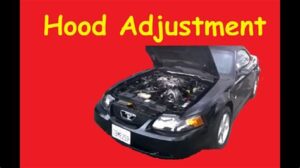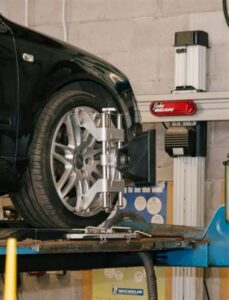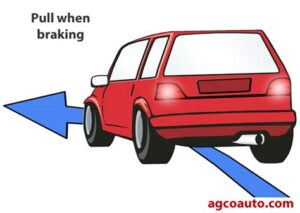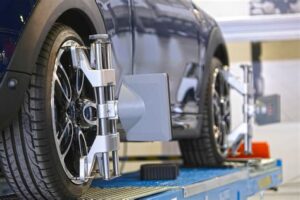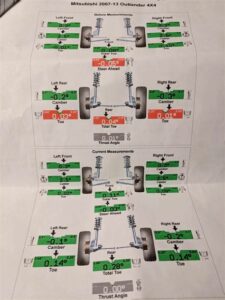Discover the significance of proper vehicle alignment, its effects on driving performance, and learn how to identify and correct alignment issues effectively.Driving a car with bad alignment can pose serious risks, not only to your vehicle’s performance but also to your safety on the road. When your wheels are misaligned, it can lead to uneven tire wear, decreased fuel efficiency, and compromised handling. Understanding the nuances of bad alignment is crucial for every driver, as it affects how your car responds during critical moments. In this blog post, we’ll explore the effects of poor alignment on driving performance, identify the telltale signs that indicate alignment issues, and highlight the dangers of neglecting these problems. Finally, we’ll guide you through essential steps to correct bad alignment, ensuring your vehicle is safe and efficient for your journeys ahead. Let’s dive into the world of wheel alignment and arm you with the knowledge needed to keep your ride smooth and safe.
Understanding Bad Alignment
When we talk about bad alignment in vehicles, we are referring to a situation where the wheels of your car are not pointing in the right direction. Proper alignment is crucial for the safe and efficient functioning of your vehicle. When the wheels are misaligned, it can lead to a variety of issues, affecting not just the performance of the car, but also safety on the road.
There are several factors that can contribute to poor wheel alignment. Common causes include hitting potholes, running over curbs, or even general wear and tear over time. Misalignment can lead to uneven tire wear, which can significantly reduce the lifespan of your tires and compromise your vehicle’s safety.
Understanding the implications of bad alignment is essential for any car owner. By recognizing the signs and addressing issues promptly, drivers can avoid costly repairs and ensure a smoother, safer driving experience. Regular maintenance and checks can go a long way in maintaining proper alignment and enhancing driving performance.
Effects on Driving Performance
Driving a car with bad alignment can significantly affect your driving performance. When your vehicle is out of alignment, it doesn’t handle as it should, leading to numerous issues that can compromise both safety and comfort on the road.
One of the primary effects of poor alignment is uneven tire wear. This means that some tires may wear out faster than others, which not only affects the longevity of your tires but can also lead to a loss of traction. In adverse weather conditions, this can severely hinder your ability to control the vehicle, potentially leading to accidents.
Additionally, a vehicle with bad alignment will pull to one side while driving, requiring constant steering corrections. This not only increases driver fatigue but also distracts you from the road, further compromising your driving performance. It’s crucial to recognize these signs early and address them to ensure a safer and more enjoyable driving experience.
Signs of Poor Alignment
Driving a car with bad alignment can lead to a variety of issues, compromising both safety and performance. Recognizing the signs of poor alignment early on is crucial for preventing further damage and ensuring a smoother driving experience.
One prominent sign that your vehicle may have alignment problems is uneven tire wear. If you notice that the tires are wearing down more on one side than the other, it’s a clear indicator that something isn’t right. Regularly inspecting your tires can help you catch this issue early.
Another common sign is if your vehicle pulls to one side while driving. If you find yourself constantly having to correct the steering wheel to keep your car going straight, it’s time to evaluate the alignment. Lastly, if you feel your steering wheel vibrating or you notice a crooked steering wheel while driving straight, these are also potential signs of poor alignment.
Ignoring these warning signs can lead to more severe issues, including decreased fuel efficiency, compromised handling, and ultimately, unsafe driving conditions. Taking immediate action when you notice these symptoms can save you from costly repairs and ensure you stay safe on the road.
Dangers of Ignoring Alignment Issues
Ignoring alignment issues in your vehicle can lead to serious consequences that compromise both safety and performance. When your wheels are not properly aligned, it can create uneven tire wear, which not only reduces the lifespan of your tires but also impacts your vehicle’s handling. This situation may cause you to lose control, especially during emergency maneuvers.
Furthermore, poor alignment can lead to additional strain on your vehicle’s suspension system. Over time, this added pressure can result in costly repairs. Here are some specific dangers of driving with bad alignment:
- Poor Handling: Your car may pull to one side, making it difficult to maintain a straight line.
- Increased Tire Wear: Uneven wear can lead to the need for premature tire replacements.
- Fuel Efficiency Issues: Misaligned wheels can create drag, which reduces your vehicle’s fuel efficiency.
In addition to these issues, driving with misaligned wheels can also increase stopping distances, putting you and other drivers at risk. It’s crucial to pay attention to any signs of alignment problems and address them promptly before they escalate into more serious, and potentially dangerous, situations.
Steps to Correct Bad Alignment
Driving a car with bad alignment can lead to a myriad of issues, affecting both safety and vehicle performance. It is crucial to address alignment problems promptly to ensure a smooth and safe driving experience. Here are the essential steps to correct bad alignment:
- Inspect Your Tires: Start by checking the tire pressure and tread wear. Uneven wear patterns can indicate alignment issues.
- Visit a Professional Mechanic: If you suspect bad alignment, it’s important to consult with a qualified mechanic who can perform a proper inspection.
- Alignment Check: Request a full alignment check. This will include adjustments to the toe, camber, and caster angles of your car’s wheels.
After the professional alignment, ensure you keep an eye on your vehicle’s handling over time. Regular maintenance plays a significant role in preventing alignment issues.
Regular Wheel Alignments: It’s recommended to get wheel alignments every 6,000 miles or as specified by your vehicle’s manufacturer. This preventive step can save you from more costly repairs in the long run.
In summary, addressing bad alignment promptly through careful inspection, professional help, and regular maintenance can significantly improve your driving experience and vehicle safety.
Frequently Asked Questions
What are the signs of bad wheel alignment in a car?
Common signs of bad wheel alignment include the car pulling to one side, uneven tire wear, a crooked steering wheel when driving straight, and vibrations in the steering wheel.
How does bad alignment affect driving safety?
Bad alignment can lead to poor handling, increased stopping distances, and a higher likelihood of tire blowouts, all of which significantly compromise driving safety.
Can bad alignment lead to other car problems?
Yes, bad alignment can cause uneven tire wear, which may necessitate premature tire replacement, and can also place additional strain on suspension components, leading to more costly repairs.
How often should I check my car’s alignment?
It’s recommended to check your car’s alignment at least once a year, or more frequently if you notice any handling issues or if you’ve hit a curb or pothole.
What causes bad wheel alignment?
Bad wheel alignment can be caused by various factors, including hitting potholes or curbs, worn suspension parts, and regular wear and tear over time.
Is it safe to drive a car with bad alignment?
While it is possible to drive a car with bad alignment, it is not safe and can lead to more significant issues, including accidents. It’s best to have it repaired as soon as possible.
How can I fix bad wheel alignment?
To fix bad wheel alignment, it’s best to take your car to a professional mechanic who can perform a wheel alignment service, adjusting the angles of the wheels to the manufacturer’s specifications.
